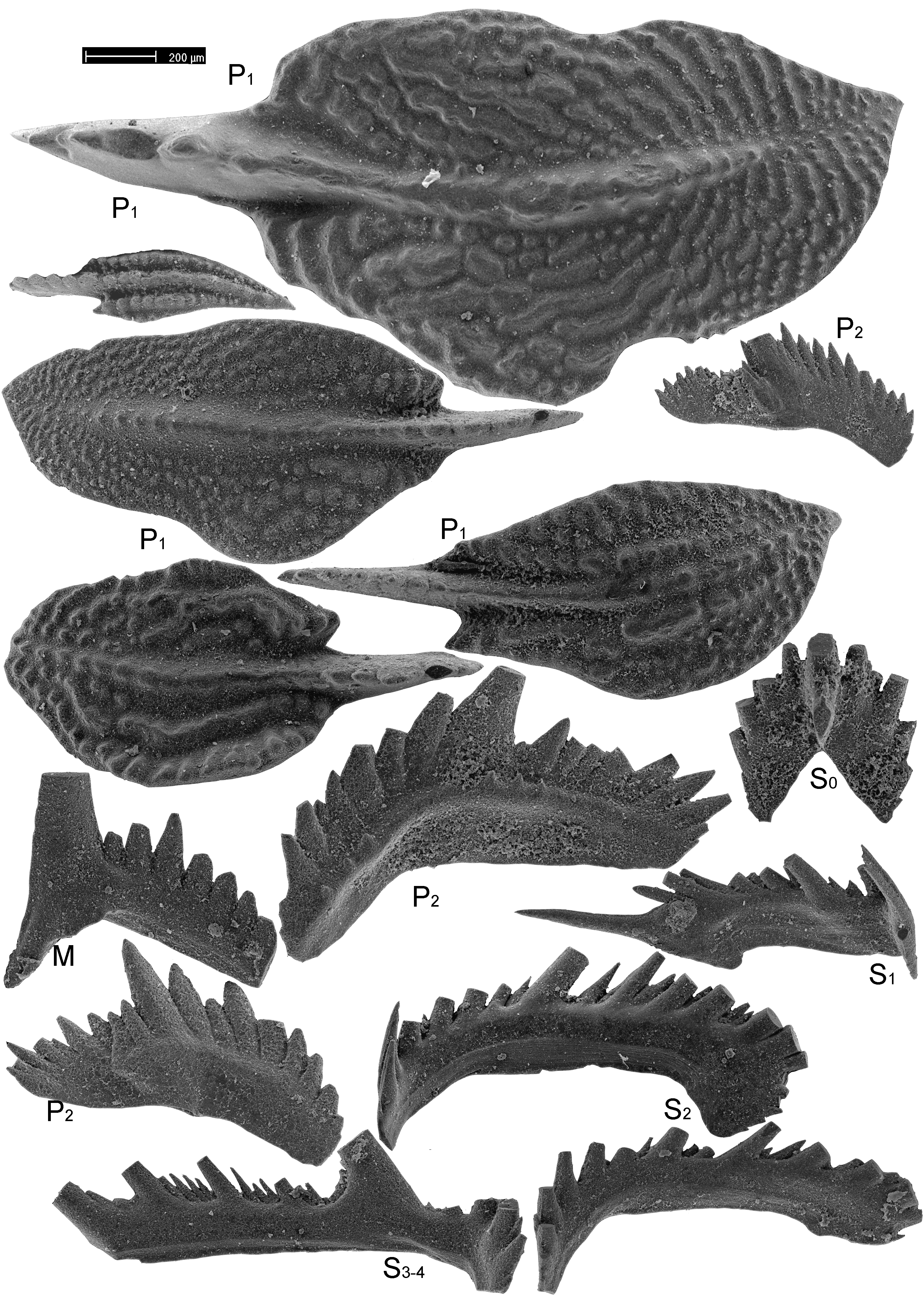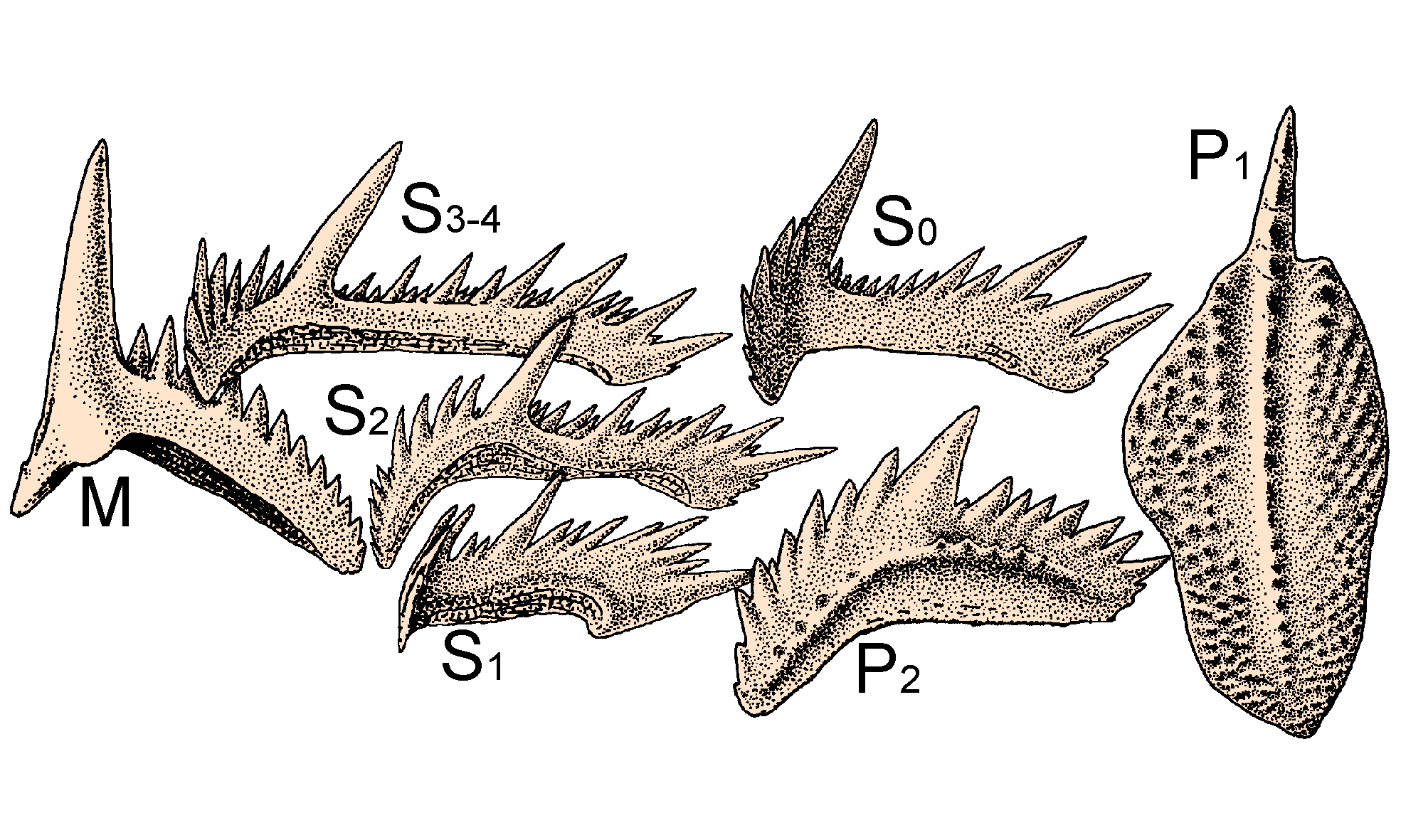Diagnoza
Platform of P1 elements leaf-like in outline and slightly constricted at mid-length, bears more or less distinctly developed ridges parallel to the blade in its ventral part and is uniformly tuberculated in the dorsal part; P2 elements robust but with peniculus at early stages. Porównanie
The apparent separation of the dorsal part of the platform from the ventral part by an incipient constriction, visible in the topotype material, leaves little doubt that this is a relative of P. triphyllatus. Peniculus and platform with rows of tubercles parallel to the blade in juveniles disclose affinities with Polynodosus transitus. The similarity of adult P1 specimens to those of Polylophodonta is thus only convergent. In the Holy Cross Mountains and Thuringian samples from the early Cheiloceras Stufe, together with specimens closely similar to the lectotype another morphotypes occur, classified by Helms (1961) in his Polygnathus flaccida. Such forms have not been illustrated by Huddle (1968) among the topotype American specimens. This may be due to the small number of exclusively mature specimens rpresented in his sample. In fact, the incompletely preserved holotype of Polygnathus pennatuloideus of Holmes (1928), co-occurring with P. confluens in the Chattanooga Shale near Huntsville, Alabama may represent a robustly ornamented morphotype of the same population. There is a possibility of somewhat bimodal (dimorphic) distribution of morphologies of this element but it is obscured by a very wide range of population variability. Possibly the specimens with finely tuberculated dorsal part of the platform are counterpairs of those with wide strongly ribbed platform but there is a common reversal in asymmetry within the pair. Autekologia Występowanie geograficzne
Kadzielnia and Kowala. Zasięg czasowy
The K. crepida Zone. Materiały muzealne
ZPAL: 1011 specimens. Literatura
Dzik, J. 2006. The Famennian "Golden Age" of conodonts and ammonoids in the Polish part of the Variscan sea. Palaeontologia Polonica 63, 1-359. | 

